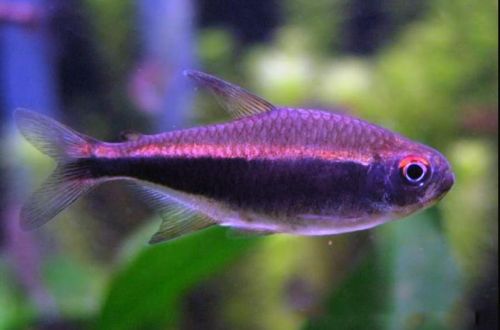
Bocilia dwarf
Botsia (Bocilia) dwarf, scientific name Ambastaia sidthimunki, belongs to the Cobitidae family. Peaceful calm fish with an original body pattern. Unpretentious and easy to maintain. Compatible with many other fish that can live in similar conditions. These qualities make this species a good candidate for the general aquarium.

Contents
Habitat
It comes from Southeast Asia, from the territory of the western part of Thailand bordering Myanmar. It lives in slow-flowing rivers and streams flowing through dense tropical forests. Fish prefer areas near the coast with many shelters from flooded trees, roots, and the ground is strewn with fallen leaves.
Brief information:
- The volume of the aquarium – from 80 liters.
- Temperature – 20-30°C
- Value pH — 5.5–7.5
- Water hardness – soft (2-12 dGH)
- Substrate type – sandy
- Lighting – subdued
- Brackish water – no
- Water movement – moderate or weak
- The size of the fish is 5–6 cm.
- Nutrition – any drowning
- Temperament – peaceful
- Content in a group of at least 5 individuals
Description
Adult individuals reach a length of about 6 cm. Sexual dimorphism is weakly expressed. Females are somewhat larger than males. However, it is rather problematic to accurately determine the sex, especially in an aquarium with fish of different ages. The body pattern consists of intersecting horizontal and vertical dark stripes on a light yellow background, forming large dots. On the head near the mouth are sensitive antennae, with the help of which the Pygmy Botsia finds food.
Food
In the wild, these fish comb the bottom in search of small aquatic insects and their larvae, crustaceans and other benthic zooplankton. In a home aquarium, sinking foods should be fed, such as dry flakes or pellets, frozen bloodworms, brine shrimp, pieces of earthworms. An important addition to the diet are herbal supplements.
It should be noted that decorative snails (their initial stages of development) can also act as a food source.
Maintenance and care, arrangement of the aquarium
Aquarium sizes for a group of 5 fish should start at 80 liters. The design is arbitrary, the fish will feel great both among dense vegetation and in a half-empty tank with a sandy substrate and several shelters.
To simulate conditions close to the natural habitat, soft soil is used mixed with large stones and pebbles. Low-growing shade-loving plants with wide leaves, on which Botsii can sometimes rest. Natural driftwood in the form of roots, branches and fragments of a tree. The lighting is subdued. Water movement is weak or moderate.
Optimal conditions of keeping only in clean and oxygen-rich water. To do this, in addition to a productive filtration system, it is necessary to update part of the water (30–35% of the volume) weekly with fresh water and regularly clean the aquarium from organic waste.
Behavior and Compatibility
Peaceful calm fish, compatible with other species of comparable size and temperament. However, there are observations that Bocilia dwarf is prone to biting off long fins from tank neighbors. Refers to schooling species, keeping in a group of at least 5 or more individuals of both sexes.
Breeding / breeding
In nature, the breeding season of fish is accompanied by their migration upstream the rivers and is due to seasonal changes in the composition of the water. It is extremely difficult to recreate such spawning incentives in a home aquarium. However, in large groups there were cases of the appearance of offspring, but this is episodic. Purposeful breeding is hardly possible. In commercial fish farms, hormonal injections are used for this purpose.
Fish diseases
Health problems arise only in case of injuries or when kept in unsuitable conditions, which depresses the immune system and, as a result, provokes the occurrence of any disease. In the event of the appearance of the first symptoms, first of all, it is necessary to check the water for the excess of certain indicators or the presence of dangerous concentrations of toxic substances (nitrites, nitrates, ammonium, etc.). If deviations are found, bring all values back to normal and only then proceed with treatment. Read more about symptoms and treatments in the Aquarium Fish Diseases section.





